| Posted: Jan 01, 2016 | |
Top 10 nanotechnology spotlights 2015 |
|
| (Nanowerk Spotlight) Here are the 10 most popular Nanowerk Nanotechnology Spotlight articles of 2015: | |
| A quick and simple blood test to detect early-stage cancer | |
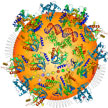 A novel nanoparticle blood test detects an overall increase of human immunoglobulin G (IgG), including the tumor-specific autoantibodies, adsorbed to a gold nanoparticle surface. While this test may not be able to identify the specific type of cancer, it may potentially be able to detect early stage tumor-induced immune responses associated with a broad spectrum of cancer types, making this test potentially a universal screening test for cancer risk assessment. On route to self-powered smart suits |
|
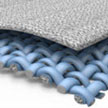 Energy-scavenging fabrics based on nano-sized generators that have piezoelectric properties could eventually lead to wearable 'smart' clothes that can power integrated electronics and sensors through ordinary body movements. Researchers have now demonstrated a new type of fully flexible, very robust and wearable triboelectric nanogenerator with high power-generating performance and mechanical robustness. This was achieved by applying a bottom-up nanostructuring approach where a silver-coated textile and polydimethylsiloxane (PDMS) nanopatterns based on ZnO nanorod arrays were used as active triboelectric materials. Nanotechnology and nanomaterials for camouflage and stealth applications |
|
 This article briefly describes how nanomaterials and nanotechnology can be useful in the strategic area of camouflage and stealth technology. The section on threat perception briefly describes about various sensors and platforms from where those sensors can be operated for the purpose of surveillance, detection and identification of military objects. Prominent nanomaterials, which can find applications in futuristic stealth have been discussed. Nanotechnology and energy – a path to a sustainable future |
|
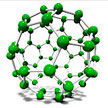 Against the double-whammy backdrop of an energy challenge and a climate challenge it is the role of innovative energy technologies to provide socially acceptable solutions through energy savings; efficiency gains; and decarbonization. Nanotechnology It may not be the silver bullet, but nanomaterials and nanoscale applications will have an important role to play. This article provides an overview of the issues and nanomaterials and applications that are being researched in the field of energy. 3D-printing with graphene |
|
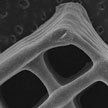 The successful implementation of graphene-based devices invariably requires the precise patterning of graphene sheets at both the micrometer and nanometer scale. It appears that 3D-printing techniques are an attractive fabrication route towards three-dimensional graphene structures. Researchers have now used flakes of chemically modified graphene, namely graphene oxide GO and its reduced form rGO, together with very small amounts of a responsive polymer, to formulate water based ink or pastes to be used in 3D printers. Fuzzy and Boolean logic gates based on DNA nanotechnology |
|
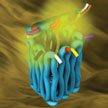 Research related to molecular logic gates is a fast growing and very active area and molecular devices have become the new frontier in computing. Researchers now have designed and synthesized self-assembled DNA complexes that sense two environmental signals and produce a fluorescent outputs corresponding to the operation of all six Boolean logic gates AND, NAND, OR, NOR, XOR, and XNOR. This study could help improvements in the fields of molecular computation and intelligent drug delivery. Towards self-powered electronic papers |
|
 An international research team has designed and demonstrated novel self-powered human-interactive transparent nanopaper systems, utilizing transparent nanopaper as base material. This nanopaper system is based on an electrostatic induction mechanism and a dielectric material. That makes them self-powered, i.e. able to operate without the need for external power. The basic working mechanisms of the resulting devices are electrostatic induction effects caused by the retaining charges. Has nanomedicine lived up to its promise? |
|
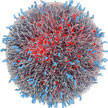 Historically, the approval of Doxil as the very first nanotherapeutic product in 1995 is generally regarded as the dawn of nanomedicine for human use. Although numerous products classified as nanomedicine products have indeed appeared over the past decade, such products have not exactly revolutionized treatment paradigms as envisaged earlier. In particular no molecular machine or nanorobot has yet entered clinical trials, although research in these areas is picking up pace. Smart materials become 'alive' with living bacteria in supramolecular assemblies |
|
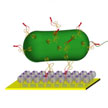 Supramolecular chemistry deals with molecular building-blocks that interact with each other in a dynamic manner, similar to what is seen in nature. Taking advantage of this, several 'smart' materials have been developed for biomedical applications by careful design of these building-blocks. These materials have especially interesting properties like self-healing and responsiveness to light and electricity. Researchers have now explored the possibility of developing a bacterial strain with the ability to interact dynamically with a popular supramolecular building-block. Repair nanobots on damage patrol (w/video) |
|
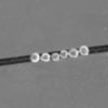 Researchers engineered synthetic nanomotors that self-propel and autonomously detect surface cracks in electronic devices and rapidly restore the conductive pathway. These nanomotors were inspired by the chemotaxis of neutrophils toward inflammation sites and the aggregation of platelets at the collagen fibers of a wound to stop bleeding. The catalytic nanomotors are composed of conductive gold/platinum spherical Janus particles that self-propel efficiently in the presence of hydrogen peroxide fuel. |
|
| Also check out our Top 10 Spotlight articles from previous years. | |
|
|
|
|
Become a Spotlight guest author! Join our large and growing group of guest contributors. Have you just published a scientific paper or have other exciting developments to share with the nanotechnology community? Here is how to publish on nanowerk.com. |
|
